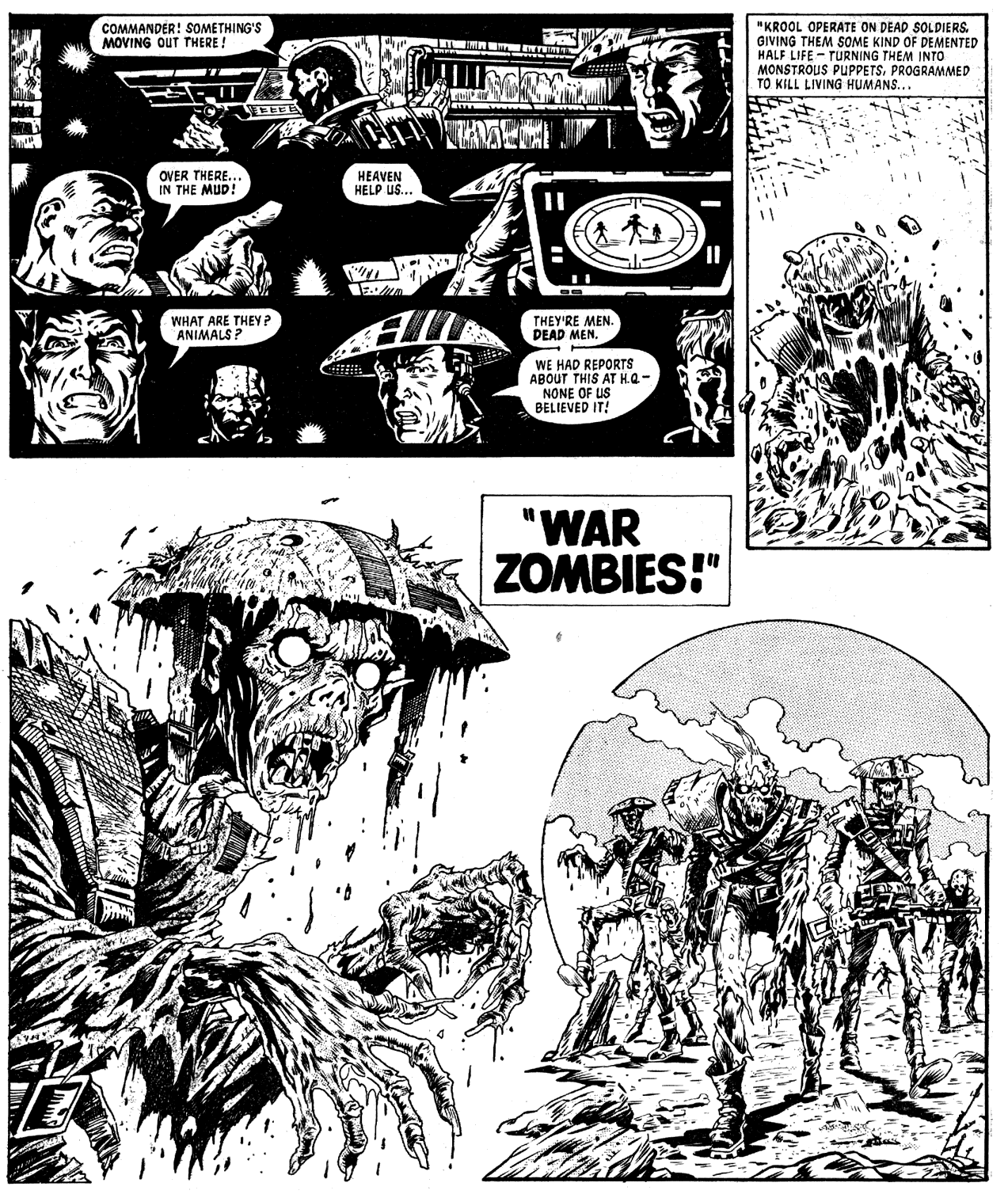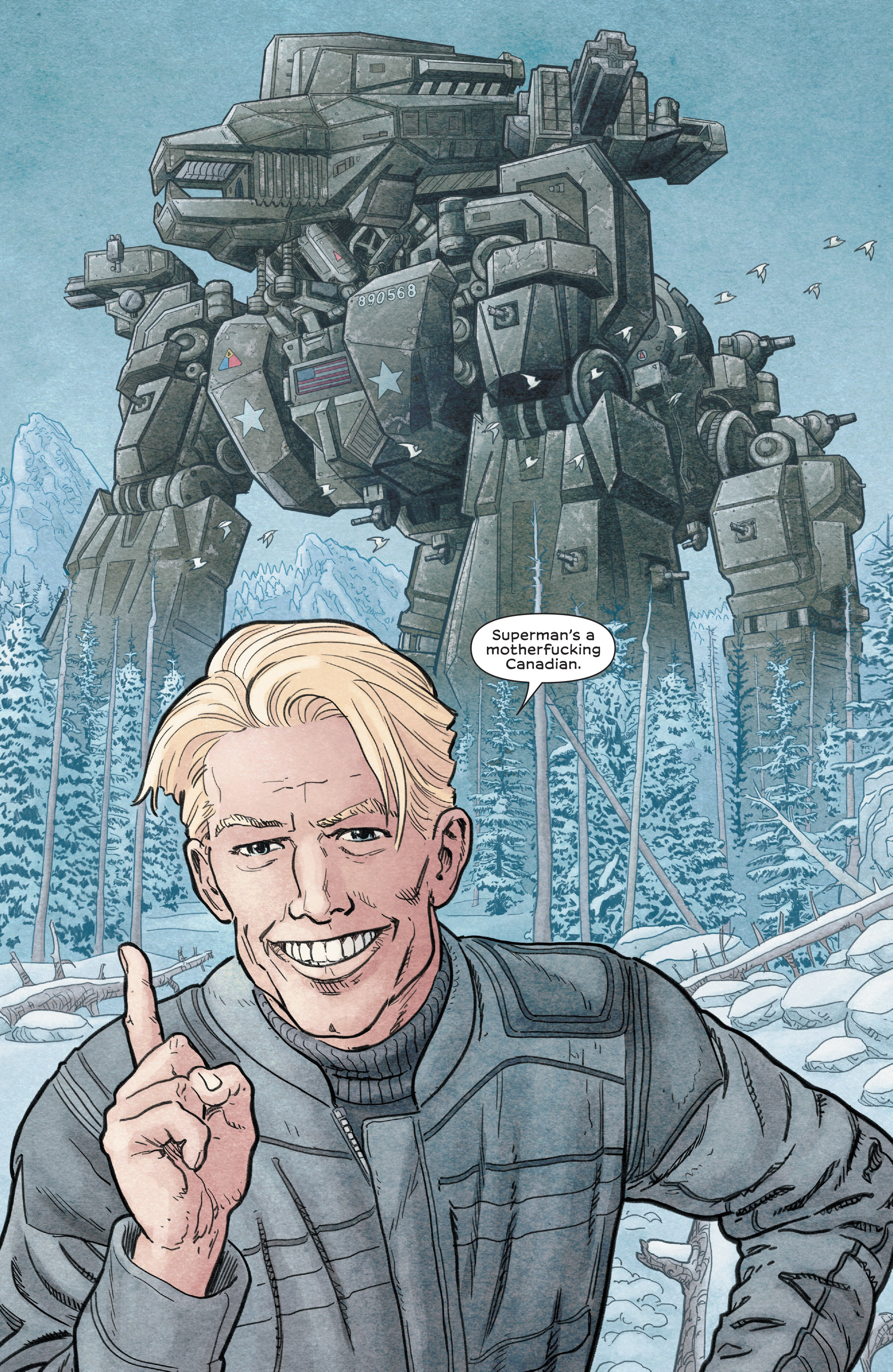While Rogue One: A Star Wars Story delivers a pretty solid aliens-on-a-mission yarn, its unpretentious blend of dirty action and brazen fan service is bound to split the critical opinion. So far, the film has at least stirred up some alt-right backlash, leading Disney’s CEO to claim that there is nothing political about the latest Star Wars prequel. Although perhaps commercially sound and a progressive way to re-frame the terms of public discussion, such a rejection of political readings means inviting viewers to miss out on a particularly stimulating way to approach this fictional universe, shaped as it is by tales of war and revolution. Surely part of the franchise’s lasting success has to do with how much fun it is discuss these stories’ various implications, the more farfetched the better (Kevin Smith built a whole career on it).
In their own nasty, messed up way, jerks raving against Rogue One for featuring a diverse, female-led team on a quest to bring down a white supremacist government appear more willing to engage with the movie’s themes than Disney. Their interpretation – just like finding a parable about radicalization in these stories of kids recruited to fight with all the religious zeal and murderous violence of a galactic Daesh, or drawing considerations on historical memory and propaganda in order to explain the series’ incongruities, or analyzing what the overarching narrative implies about corporate culture – further contributes to our collective examination of a mythology that, for once, is unlikely to get you killed for heresy in the real world.
In any case, even if you see in the films a celebration of multiculturalism or militarism or terrorism or any other ‘ism’ you righteously or unfairly oppose, I’m still not convinced this should automatically prevent you from enjoying them. For me, much of the appeal of the whole sub-genre of military science fiction is precisely the way in which it presents conflict from unusual perspectives. It can provide a new take on current and recent battles by framing them in a different context or, in turn, enable us to vicariously take part in the excitement and drama of armed struggle without the full weight of recognizable tragedies. In fact, filmmakers have a history of using outer space to explore provocative genre twists: Starship Troopers is basically a WWII story where the Nazis are the heroes; Ghosts of Mars is a colonialist western with the kind of anti-natives streak that largely fell out of use since the 1950s; conversely, Avatar is a blunt anti-imperialist fable.
That got me thinking about comics that have taken advantage of this sub-genre’s potential. As a result, the idea here is not to recommend stuff that emulates the *feel* of Star Wars (let’s face it, if you’re into that type of interplanetary adventure, you’re probably already reading Brian K. Vaughan’s and Fiona Staples’ beautifully illustrated Saga and you’ve already seen the fun if flawed Guardians of the Galaxy movie). Instead, I’ll suggest three comic series that approach the concept of futuristic warfare in interesting ways:
BAD COMPANY
For the past four decades, the British anthology magazine 2000 AD has specialized in sci-fi/fantasy, albeit of a much edgier sort than Star Wars (the spectacular-looking Nemesis the Warlock feels like the trippy nightmare of a feverish Darth Vader, while Nikolai Dante could be the mischievous wet dream of a horny Han Solo). Of the magazine’s various ventures into martial territory, one of the most popular is Bad Company, the saga of a motley crew of renegades operating behind enemy lines in a war between humans and a sadistic alien species called Krool.
Written by Peter Milligan and illustrated by Brett Ewins and Jim McCarthy, this is a somewhat uneven series, but there is definitely a lot to like in here. In the first story-arc (originally published in 1986-1987), set in a hellish planet with hallucinogenic winds and alcoholic mud, young soldier Danny Franks is rescued by Bad Company, only to gradually realize they can be as terrifying as the enemy, especially the team leader Kano (a cross between Colonel Kurtz and Frankenstein’s monster). The second arc, ‘The Bewilderness’ (1987-1988), introduces other planets – each with a miserable name evoking ‘the lost nature of modern dislocated man’ – as well as an odd batch of new cast members to replace earlier casualties.
Among quirky concepts like mutant POWs and Mad Tommy Churchill (a soldier apparently convinced he is fighting in World War II), you’ll find a creepy depiction of the psychological effects of combat, namely the feeling of being stranded on an insane world, far away from home, increasingly dehumanized and surrounded by monsters.
The third set of stories, ‘The Krool Heart’ (1988) – in which Danny Franks, after undergoing a psychedelic revelation, establishes an unexpected connection with the Krool – is probably the highest point, as Peter Milligan goes even further in terms of incorporating his usual fascination with questions of identity… As a fan of Milligan’s work, I’m also interested in how Bad Company compares to his other futuristic tales from this period – it’s less focused than Tribal Memories yet much more restrained than Freakwave (a surrealist apocalyptic surf comic).
The creators reunited in 1993 for a sequel focused on Kano, haunted by literal ghosts of war on yet another bizarre planet (where every day at noon time ran backwards for an hour), and again in 2001, for a face-off between Danny and Kano that sadly undid the powerful ending of ‘The Krool Heart.’ Last year, Milligan returned to the characters – now with Rufus Dayglo on pencils – for a story-arc about life as a Bad Company veteran which revised key elements of the series’ mythology.
GIVE ME LIBERTY
The 1990 mini-series Give Me Liberty is a relentless cyberpunk epic about Martha Washington, a girl from a rough housing project who joins the US Peace Force. Her missions include defending the Amazon rain forest from militarized hamburger companies and recovering a space cannon hijacked by militant gay neo-Nazis out to kill the United States president (a drunken liberal on the verge of a nervous breakdown). She also finds herself in the middle of a conflict with the Apache Nation and an expanding US civil war.
With the same gonzo, tongue-in-cheek spirit he brought to Elektra: Assassin and Dark Knight Strikes Again, Frank Miller spreads his satire far and wide, in all directions, coming up with such preposterous ideas as a media campaign rehabilitating the KKK, a sex scandal in the Vatican, and an ill-prepared, authoritarian leader in the White House (who is named ‘Man of the Year’ by a Time-like magazine, albeit with a less impressive cover than the latest version of the real thing). The dynamic art is provided by the brilliant Dave Gibbons, who is as skilled at framing vicious suspense and violence as at nailing deadpan comedy. This is the work of two creators who were at the absolute top of their game.
(Miller and Gibbons later brought back Martha Washington for a number of – increasingly objectivist – sequels over the years but, disappointingly, none of them came anywhere near the magic of the original series.)
As far as eighties’ over-the-top thrillers go, there are mostly three types of movies I enjoy… Some are fine examples of slick sci-fi action (Predator, Aliens, The Terminator, The Thing), some are offbeat works that nevertheless achieved broad recognition due to their visionary takes on the future (Akira, RoboCop, Escape from New York, Blade Runner, not to mention The Road Warrior and Mad Max beyond Thunderdome), and then there are the ones that, rather than transcend their schlockiness, embraced it in a fun and charming way (They Live, Highlander, Trancers, Streets of Fire). This comic, made at the tail end of the decade, oscillates between all of those tones – at times, it is as gripping and brutal as you can get, other times it dives head first into weirdness (one subplot concerns a conspiracy involving psychic schizophrenics wired into a computer software, another one concerns the Health Police led by a surgeon who declares a literal war on disease) while also getting chuckles out of campy names like Attorney General Sphincter and Colonel Crotch.
WE STAND ON GUARD
Like I said in the introduction, I don’t think it’s worth delving too much on the smutty, pacifist alien fantasy series Saga, which doesn’t need my recommendation, as it has become one of those critical darlings with plenty of devoted fans, even outside the comics community. Sure, like everything that gets a lot of love, there’s a fair amount of backlash as well… Me, I like it just fine, although not as much as Brian K. Vaughan’s more overtly political sci-fi series Y – The Last Man and Ex Machina (even if Saga’s otherworldly setting does mean we get less encyclopedic factoids and pop culture references, restraining Vaughan’s most annoying writing tics).
Instead, let me draw your attention to 2015’s We Stand On Guard, a hardcore dystopic tale set during a near-future US invasion of Canada, also written by Vaughan. With its focus on a fearless young woman joining a ragtag resistance guerilla with small odds of survival, this book anticipated many of the motifs of Rogue One, only with a lot more ruthless carnage and salty one-liners.
Securing the story’s adrenaline-charged pace and fist-pumping twists and turns, artist Steve Skroce and colorist Matt Hollingsworth seem to be having a field day, at least when it comes to conjuring up vast landscapes and intricate mecha war machines.
Besides delivering an exhilarating adventure romp, We Stand On Guard is unapologetically topical. It’s packed with allusions to military drones, terrorism, torture, and imperialism, eventually culminating in a compelling statement about the cycle of violence (all it’s missing is a Propagandhi soundtrack). Once again, Brian K. Vaughan proves that he is not only a master of cliffhangers and smart-ass banter, but also second to none in terms of coming up with clever high concepts and squeezing them for all their worth. Here, by placing stereotypically sympathetic Canadians as the targets of occupation, he imagines the War on Terror without the mantle of racial, cultural, and religious prejudice… and we are left to ponder how recognizable it still feels.






